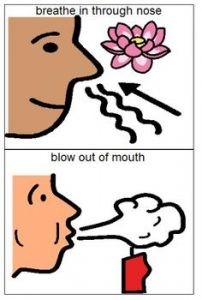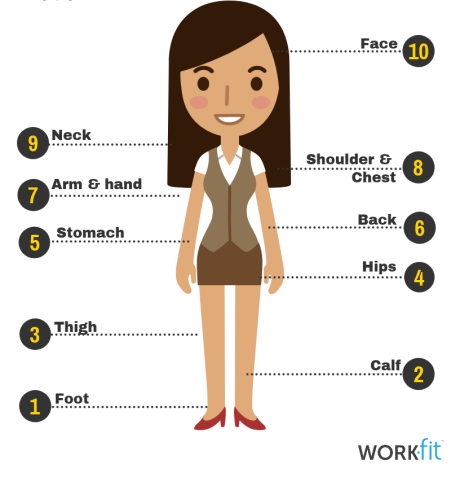By Lauren Appel
“Mindfulness” has become a hot topic word and research has increased its fame. Some benefits fall under the categories of emotional regulation, interpersonal (interactions with other people), and intrapersonal (interactions with yourself) (Davis & Hayes, 2011.) All of these can reduce or eliminate emotional pain which can help overall functioning and remove these barriers to learning.
But what is mindfulness? The Oxford Dictionary defines it as “A mental state achieved by focusing one’s awareness on the present moment, while calmly acknowledging and accepting one’s feelings, thoughts, and bodily sensations.” Every definition that crops up highlights the same element which is focusing on the present. While traditional meditation brings us to the present, there are other more engaging ways to help our students reach this point. Below are some suggestions in guiding students to the present.
Breathing
Focusing on the breath is one of the most basic forms of mindfulness. Typically, you breathe in through your nose for 4 counts, hold for 4 counts, and breathe out through your mouth for 4 counts. The point is to slow down your breathing as much as possible. All of these strategies will take practice and may need prompts to engage in deep breathing. Some key strategies to breathing are as follows:

Breathe in through your nose, out through your mouth- I often use the image that illustrates smelling the flower and blowing out the candle. This is especially helpful to younger students
Breathe from your belly– deep breathing can also be called belly breathing to emphasize the fact that your belly should rise and fall, not your chest. Breathing from your chest can create feelings of tension and panic. Sometimes it helps to put a hand on your stomach to feel it rise and fall. Younger children may like placing a stuffed animal on their stomachs to practice. This provides a great visual for understanding the belly breathing aspect
Five finger breathing– this serves as a visual reminder to breathe when other visual resources may not be available. You start by using your left finger to trace the line that goes up your right thumb. When you are slowly moving up a finger, you breathe in for 4 counts and when you slowly move down your finger to a “valley” between 2 fingers, you breathe out. The idea is to go through your fingers and return to the starting point for a total of 10 breaths. This can also be done subtly for self-conscious adolescents. No one has to know you are doing deep breathing exercises.

Timelines– This is just like 5 finger breathing except with a timeline labelled through 10. The student places his finger on the number one and breathes in and out for 4 counts then moves his finger to the number 2 and so on.
Being aware of your surroundings
This strategy is especially helpful for those suffering from trauma because it helps bring them back from the flashback to the present moment.
5-4-3-2-1– This is short for 5 things you see, 4 things you hear, 3 things you can touch, 2 things you can smell, and 1 thing you can taste. For younger children, it may be enough just to name the items. For older or more advanced students, ask them to describe each item without giving away the name of the particular thing they are experiencing. The more details they can put into it, the more engaged and present they become.
Progressive Muscle Relaxation
This involves purposefully tightening certain muscle groups, holding it for several seconds, then relaxing them, or as I call it “becoming a limp noodle.” Different muscle groups include face, neck, shoulders and chest, arm and hand, stomach, hips, thigh, calf, feet.

Meditation
Most meditations help bring the focus to your breath or other sensations in your body. There are guided meditations that narrate through the process and others that may have a gong or natural sounds and are more up to the meditator to make the most of it. The later should be used for advanced groups only. The length of the meditation should be based on both the age and experience of the student. Sometimes a couple minutes is more than enough. Both of these types of meditations can be found on YouTube as well as other apps like Insight Timer.
Reference
Davis, D. M., & Hayes, J. A. (2011). What are the benefits of mindfulness? A practice review of psychotherapy-related research. Psychotherapy, 48(2), 198–208. https://doi.org/10.1037/a0022062
Leave a Reply